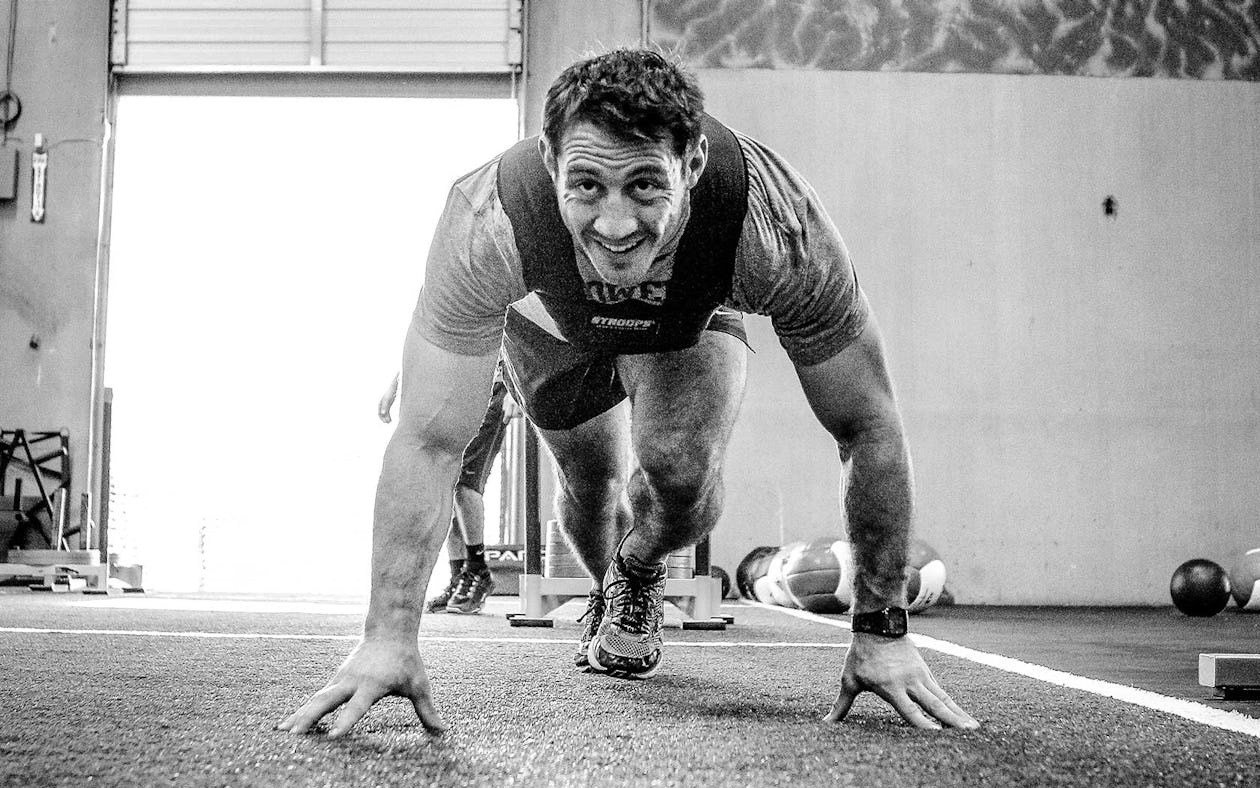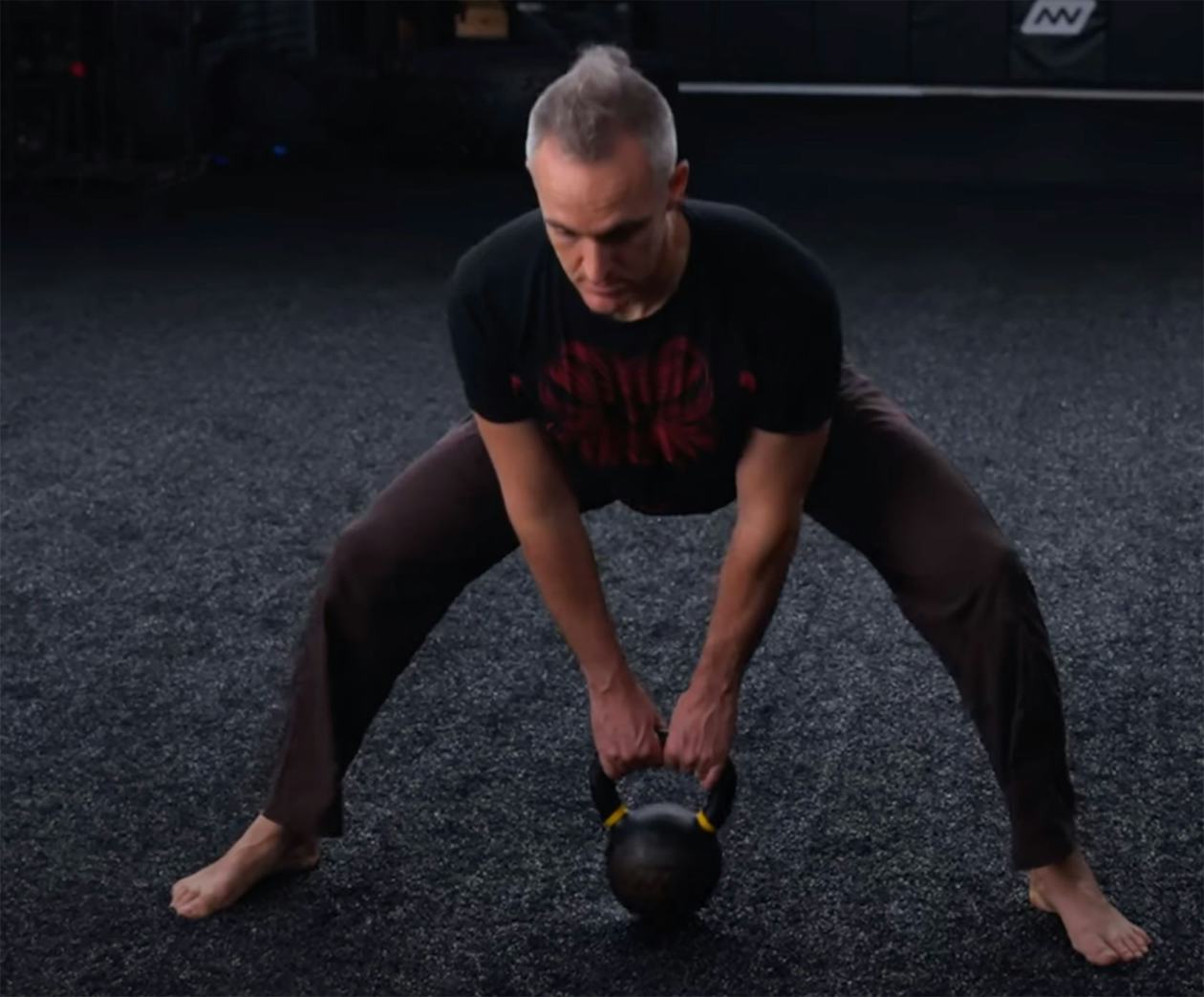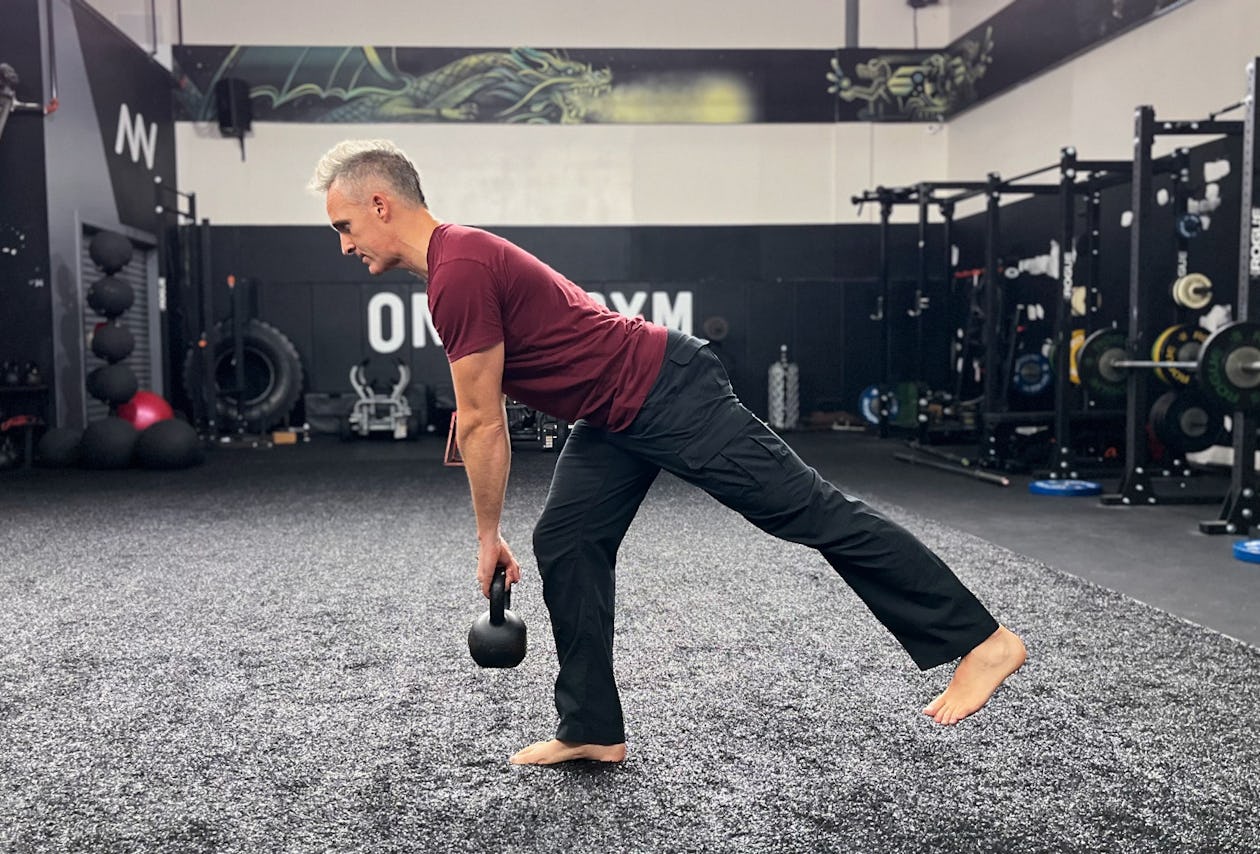Fans can argue day and night about who the toughest fighter is in the UFC—who’s the baddest, or who’s the most dangerous. But if you had to pick the fighter you’d most want to have your back walking down a dark alley, it’s not up for discussion: it’s Tim Kennedy.
And if you had to attach a superlative to him, he may be the fittest. The UFC middleweight is a Special Forces sniper and Green Beret who weathered tours of duty in Afghanistan and Iraq. He walks around at 220 pounds and trains three times daily.
Kennedy starts with a strength and conditioning session in the morning followed by sparring in the afternoon and jiu-jitsu in the evening. Below is an abbreviated example of the kind of metabolic conditioning workout he does.
The Tim Kennedy Workout

Warmup
Workouts begin with mobility drills to warm up, including hip circles, fire hydrants, and runner’s lunges.
Ladder Drills
Place an agility ladder on the floor and run the length of it. Do one pass by putting one foot in each box. On the second time through, put both feet in each box. Repeat both drills moving laterally in each direction. (Kennedy does 10 varieties of ladder drills in all.)
Cone Drills
Place 4 cones on the floor in a straight line 10 meters apart. Sprint to one, lateral shuffle to the next, then crossover step to the third and backpedal to the fourth. Reverse the order going back and repeat for 5 rounds.
Pullup Ladder
Perform 1 rep and drop from the bar. Then do 2 reps, 3, and so on up to 6 reps. Then work back down to 1. Repeat for 3 sets.
Rooney Complex
Load a barbell with 95–135 pounds and perform the following lifts in sequence: deadlift, bentover row, hang clean, front squat, push press, back squat, and pushups on the bar. Complete 6 reps for each lift and do 4 rounds total. Add 10 pounds each set. End every set with a 45-second sprint.
Med Ball Burpee-to-Box-Jump
Perform a burpee holding a medicine ball. When you come up to standing, pick up the ball, reach overhead, and then slam it into the floor and catch it on the rebound. Now perform a box jump holding the ball. That’s one rep. Do 4 sets of 10.
Rower
Row for 500 meters as fast as you can and then rest for as long as it took to row. Repeat for 400 meters, and so on down to 100.
Decompression
Perform stretches and yoga poses (plank, downward dog) to promote recovery.
Kennedy takes a bevy of supplements to aid his performance and recovery. These include MCT oil, Total Strength + Performance pre-workout formula, Shroomtech Sport, Total Human, grass-fed whey protein, Powerfood Active, and Oatmega Protein Bars.



